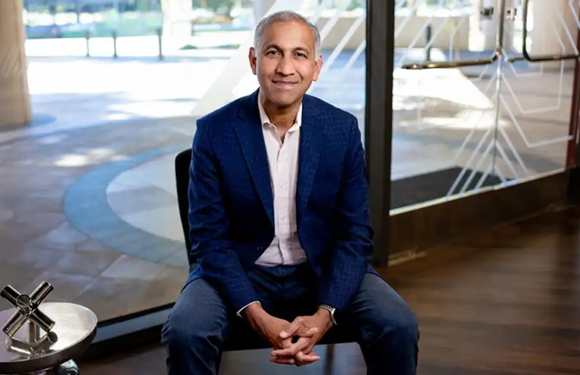Nutanix CEO: Building the infrastructure to harness AI’s potential
Nutanix CEO Rajiv Ramaswami is fond of a big picture wide-angle view… after all, he used his keynote at this year’s .NEXT user conference in Washington, D.C. to explain to attendees how and why we’ll see more applications written in the next three years than the previous 30.
At the time of that show, TechTarget reported Ramaswami saying that he (and the board) want to build capabilities on the Nutanix platform.
“We’re focusing on education [and] certifications, which is a big element of what we see at the show here. Historically, we’ve been a smaller company, but we’re maturing as a platform company and we’re [looking at education] programs in a more systematic way,” noted Tim McCarthy, TechTarget news writer in his report.
Ramaswami left the main stage behind this week for an “intimate audience” with press and analysts in London to clarify his vision further.
Because technological evolution is not just relentless but accelerating, Ramaswami told the group that he’s clear about where we stand i.e. businesses must either “evolve or risk fading into irrelevance” and this is a result of the urgent need to embrace emerging technologies, obviously including AI.
This isn’t a luxury, it’s a lifeline, he thinks.
“The next chapter of digital transformation isn’t about experimentation; it’s about survival, differentiation and velocity,” said the Nutanix CEO.
Against this backdrop, the proposition here is that Nutanix isn’t just keeping pace, it’s setting what it sees as the correct tempo for cloud-native multi-cloud to progress.
Simplicity scales, securely
With an 18% year-over-year growth in Annual Recurring Revenue (ARR) now topping $2.14 billion, the company says that this is some validation and proof that “simplicity can scale” if we take that as a centralised message that we’ve heard from the company over the years.
Nutanix’s strategy of making IT infrastructure as effortless as using an iPhone is not just rhetoric (the company claims), it’s tangible results in the form of robust free cash flow and customer loyalty.
This appears to concur with what we reported at the time on the Computer Weekly Developer Network at the .NEXT conference when noting that Ramaswami said that, “[Nutanix] customers will be able to streamline private and hybrid multi-cloud deployments through the combination of Dell’s server and storage offerings and Nutanix software.”
As part of the company’s collaboration in this space this year, Dell is now offering an integrated turnkey hyperconverged appliance combining Nutanix Cloud Platform and Dell servers. The solution will be available with a broad portfolio of PowerEdge server models and configurations to meet requirements from a wide range of applications.
Nuances of regulation, sovereignty & edge
As the company expands its reach across Europe, the Nutanix boss says he is attuned to the local nuances of regulation, sovereignty and edge computing. In markets including Germany, France and the UK, the company is laying down the foundations for national-level cloud strategies that are both compliant and future-ready.
As Ramaswami highlights, Nutanix works with customers across Europe who are building exactly this kind of resilience. Whether in financial services, public sector, or healthcare, these organisations recognise that sovereignty is not about cutting ties with the global cloud ecosystem. It is about making sure those ties are balanced, reversible, and governed by clear terms.
One such example is Nutanix’ work with the UK’s Department for Work & Pensions, which has embraced a modern cloud strategy to ensure operational continuity and flexibility at national scale. As one of the country’s largest public service departments, DWP’s ability to manage critical infrastructure with both agility and control speaks to the strategic importance of sovereign-ready digital platforms.
Did we mention AI?
Ramaswami’s vision also encompasses AI, obviously.
The latest Nutanix Enterprise Cloud Index suggests that we can now see a technology landscape that is waking up to the promise — and pressure — of automation intelligence in all its forms, with generative and agentic AI clearly in the spotlight.
With over 80% of global organisations now implementing AI strategies and the UK said to be leading in terms of productivity for automation goals, Nutanix is keen to continue helping enterprises, governments, or its own internal teams with intelligence-related projects.
Ramaswami says that Nutanix is “building the infrastructure to harness AI’s potential” and it is doing so responsibly and at scale.
Once again then, we can say that the central position from Nutanix is its ability to solidify infrastructure services for modern applications with “point-and-click simplicity” through a “single-pane-of-glass” management view with increased simplicity and better robustness.
That’s a lot of hyphens… and a lot of cloud instances.

Image credit: Nutanix



